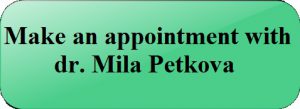4 minutes read
Fake news! It is hard to imagine the world without them, because believe it or not, human communication is full of interpretations and phantasies.
 We engage the others by creating stories about reality that is not as objective as we see it, because everyone interprets it, in a way.
We engage the others by creating stories about reality that is not as objective as we see it, because everyone interprets it, in a way.
Fake news are bits of information that spread sometimes too far, they get shared by way too many people and they are unfortunately too far from what we would call “scientific truth” – plausible and falsifiable information that has been tested to be accurate and this test can be replicated.
My first experiment with fake news was developed in a secret lab (my parents’ basement) back in the 90-s. You won’t believe what happens next! The methodology wasn’t the best, but with the limited funding I had, this was as far as I went.
I was 11 or 12, playing with my toy microscope and my limited resources when I decided that I needed better lab equipment. I made protection gear out of plastic raincoat, mom’s plastic gloves for her hair dye, and shiny silver paper. But regardless of my awesome new look, my experiment was social. I went outside dressed like that, minding my own business and I waited for someone at the street to ask me about it (Rule №1 – people must feel curious and engage in your story).
Some of the old ladies soon asked and I came up with the story that a white van (there is always a white van) stopped at the street, gave this protection clothing to everyone and the man said that there will be increased levels of radiation before and after the solar eclipse. All over the media there was news about the solar eclipse that will be visible from our country in just a few days. (Rule №2 and 3 – you must use a scary factor like “radiation” that everyone knows well. After Chernobyl everyone feared radiation. Then you need to use a real news story – the more current and widespread, the better).
I combined two actual things – radiation and sun eclipse and created a linguistic centaur which is easy to remember and scary. I knew very well solar eclipse has nothing to do with increased radiation, but I guess, like most children, I was a believable actor (Rule №4 – Make sure that you provoke the thought “why would she lie about it”).
The news went viral and soon the old ladies from the street got very restless and eager to find the white van and obtain protective gear. I even considered producing more of it and sell it for profit (Rule №5 In the end someone always profits). This is when the neighbor boy got scared that we can get in trouble and announced publicly that we are really just playing and there is no radiation and no white van.
Ethical review of my experiment.
Looking back, I wouldn’t give myself the permission to run the experiment. It violates all the ethical norms and I shouldn’t have done it. Someone might even get hurt, because I never considered if any of the subjects has serious cardiovascular disease. But I am happy I tried, because it gave me a lesson I never received in school – people, in general, are scared, anxious and in many occasions gullible. It is wrong to play games with this. “An adult” is not equivalent to “a person, who knows more”. Imagination has unlimited powers that surpass even science and technology (for better or for worse). I also learned that I really want to know more about people’s irrationality and do my best to help in the future. Which I do now and I am happy with my life choices!
Want to chat about this article? Leave a comment below or send me an email with your thoughts and don’t forget to like us on Facebook.
Picture credit – my personal archive
